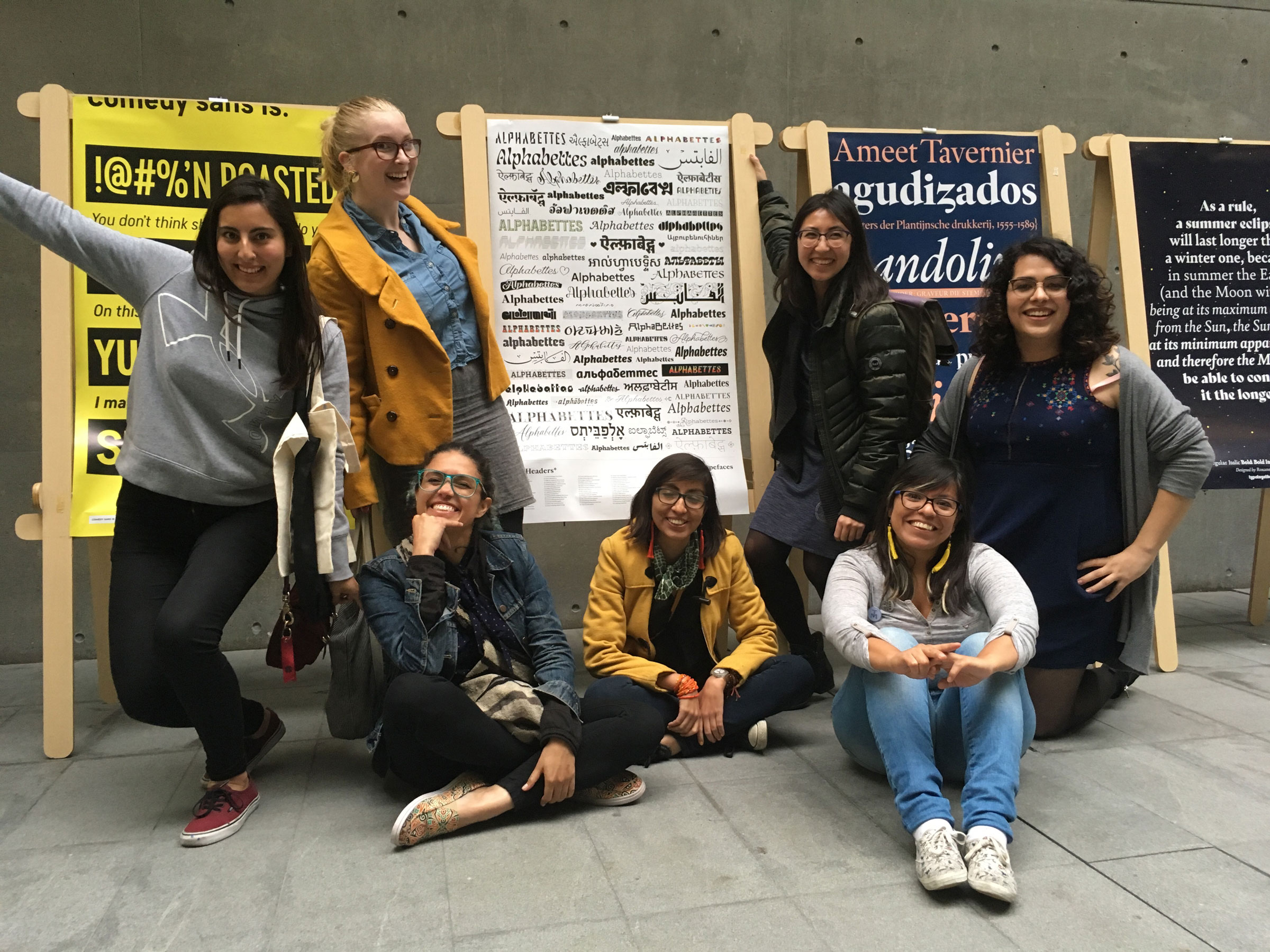We’re a few months into 2019, but it’s never too late to look at how women were represented at conferences last year. Especially since there were a couple of standout events.
We salute those type conference organizers who decided to use their 2018 chapter as an opportunity to improve their speakers lists towards gender equality and elevate women’s voices. We can’t wait to see this dedication continue to inspire others.

In order of percentage of female speakers:
100% Ladies, Wine & Design Berlin Conference, DE – Berlin
85% Women in Print, UK – Birmingham
73% Tipografía México, MX – Monterrey
71% Script, print, and letterforms in global contexts: the visual and the material, UK – Birmingham
61% (+38.89%) DiaTipo, BR – São Paulo
50% (0%) Typographics, US – New York City
49% [.01% gender fluid] (+6.06%) TypeCon, US – Portland, OR
44% Ampersand, UK – Brighton
41% (+4.5%) ATypI, BE – Antwerp
39% (+5.10%) Typo Berlin, DE – Berlin
36% Dynamic Font Day, DE – Munich
31% EDCH, DE – Munich
30% Type Drives Culture, US – New York City
28% (-5.56%) BITS, TH – Bangkok
27% Typofest, BU – Sofia & Plovdiv
26% (+16.31%) Typo Labs, DE – Berlin
25% (+12.5%) Kerning, IT – Faenza
25% (+25%) Robothon, DL – The Hague
24% Fontstand Conference, HR – Zagreb
8% All Eyes On Type, NL – Rotterdam
Let us give a round of internet applause to some outstanding conferences in 2018:
Ladies, Wine & Design: Berlin Conference had 100% women speakers. While most events under this umbrella are more intimate and focus on graphic design, this one was a full-fledged conference with approximately 80 participants, included Ulrike Rausch speaking about typeface design, and moderated by former TYPO Berlin manager Franziska Parschau. This is why we included it in this year’s list. Check out the LW&D chapter in the city nearest you.
Two events taking place at The Centre for Printing History and Culture featured a high concentration of women speakers: Women in Print, whose subjects were all women, and Script, Print, and Letterforms. Both conferences were organized by Caroline Archer, who has been putting on amazing events in Birmingham. We’re all looking forward to the book with select talks that will be available next year.
Tipografía México’s theme this year was “The Future is Female,” featuring 9 women keynotes, helping set a high standard for future typography conferences.

Illustrious attendees and speakers at Tipografía México 2018 standing in front of a poster of Alphabettes headers at the conference exhibition. Left to Right: Hannelore Ocampo, Victoria Rushton, Sandra García, Dafne Martínez, Bic Vu, Mónica Munguía, and Romina Hernandez. There in spirit: Dyana Weissman.
DiaTipo had a huge jump from 2016, going from 22% women to 61%.
Let’s also take note of the improvement in representation since 2016. All but one of the conferences that we were able to compare had improved. In the past few years, only three or four have had 48.5% or more women speaking. This year we have seven, and five of those were more than 60% women. Progress is happening. The industry can still do better, but it’s on the way.
We would also like to acknowledge the effort of the organizers of Robothon, TYPO Labs and Kerning for significant improvements in their lineups.
This list is not exhaustive, but a crop from the conferences we attended. If you know of one that’s missing, feel free to add it in the comments. For the %%%, we counted the persons listed on the speaker pages of the respective conferences or checked with conference organizers. Changes since 2016 are in parentheses, for the conferences that were part of our 2016 tally. We estimate that 48.5% of the population is female, 48.5% male, and 3% gender fluid. Conferences with 48.5% or more speakers who are women are commended.
If you don’t find your conference in the healthy top section, not all is lost. Karolina Szczur compiled a very handy list of New Year’s resolutions for tech conference organisers. We whole-heartedly agree with Karolina’s list, and wanted to share her ideas, with a few small alterations, with the type conference community:
1. Start inviting more fresh voices. It’s fine to have a curated event with well-established speakers. This can be balanced with new people who also have great ideas and vast knowledge, instead of setting an exclusionary precedent of fame and exposure.
2. Resist the urge to speak at your own conference. Having committee members as speakers gives the impression of a biased selection process.
3. Be very clear about the Call for Speakers process: How to apply, when deadlines are, and what speaker reimbursements include. People who cannot afford to travel are driven away by lapses in transparency. Example: 2018.cssconf.com.au/call-for-speakers
4. Bring conference costs down by offering a range of sponsorship benefits such as: diversity tickets, speaker sponsorships, recording, audio, et cetera. Ask sponsors for scholarship tickets. They will agree more often than you think. Run an opportunity program for underrepresented groups and those who can’t attend without financial help. Challenge the status quo of who can be in type. Example: 2018.jsconfau.com/scholarship
5. Make your event as accessible as possible. Often it doesn’t cost much. Invest in transcription, accessible venues, gender-neutral bathrooms, pumping and family rooms, and be sensitive to dietary needs. Have an accessibility statement. Example: 2018.jsconfau.com/accessibility
6. Research, write, and enforce your own Code of Conduct. Using a ready-made one can be more dangerous than not having one at all. It is important to be familiar with your own practices. Consider designating one or two approachable organizers as points of contact for attendees who may wish to report a problem. Designate an anonymous reporting box for attendees who may feel uncomfortable reporting problems face-to-face. Read: medium.com/@fox/when-a-code-of-conduct-becomes-harmful-1d4e737ff7aa
Organizers have the power to set tone for the collective culture. You can do something to make your conference more inclusive, reach a wider audience, and have a greater impact on the community.
